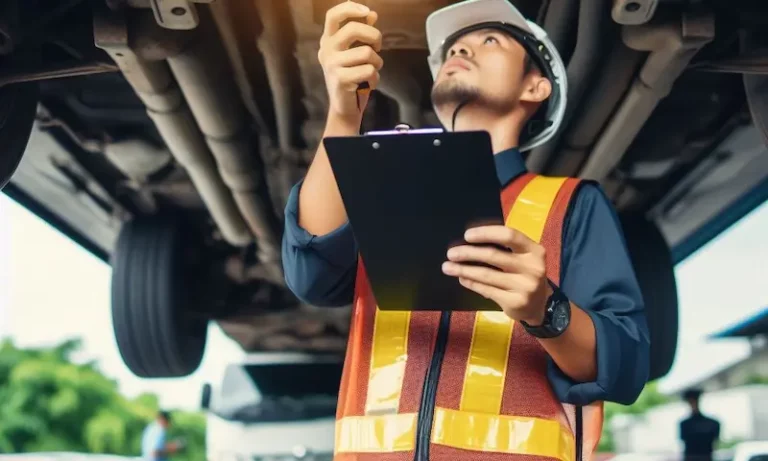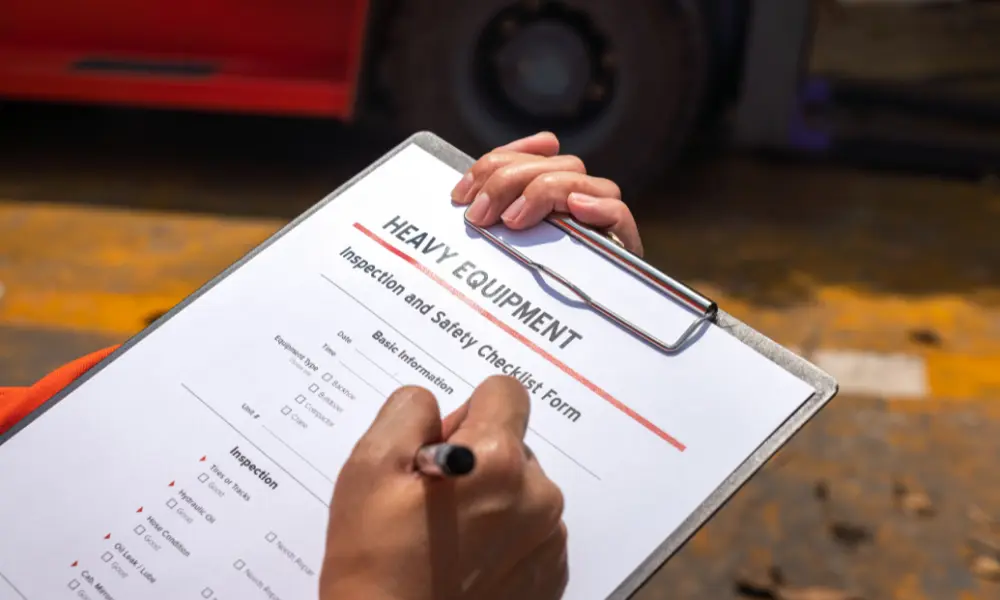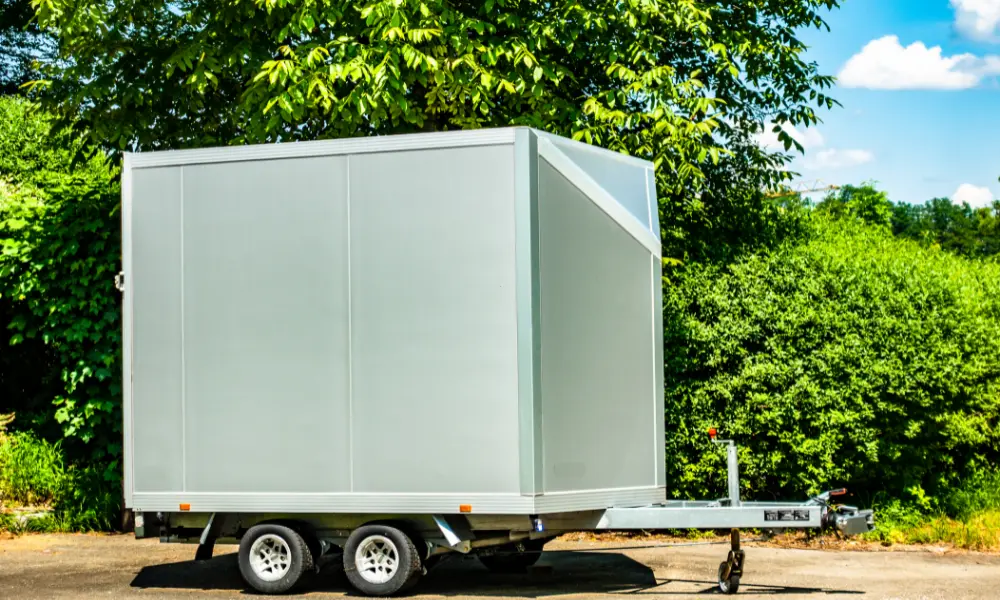In Vermont, vehicle inspection requirements are crucial for ensuring that your car or truck operates safely on the roads. The state mandates annual inspections to ensure that vehicles meet certain safety and emissions standards. By understanding these requirements, you’ll be better prepared when it’s time to get your vehicle inspected.
One key aspect of Vermont’s vehicle inspections is checking for emissions control compliance. The state requires that a car’s entire emissions control system be warranted for a minimum of 3 years or 50,000 miles. Certain components, such as the catalytic converter, are covered even longer, up to 8 years or 80,000 miles. Additionally, the inspection process evaluates various safety features of your vehicle, making sure they are functioning properly to keep you and other drivers safe on the road.
With about 1,600 licensed inspection stations across the state, you should have no trouble finding a convenient location to have your vehicle assessed. As you prepare for your inspection, it’s essential to be aware of the requirements and keep your vehicle well-maintained, ensuring a higher likelihood of passing the inspection smoothly.
Inspection Basics in Vermont
In Vermont, vehicle inspections are a requirement to ensure the safety of drivers and maintain good mechanical condition of vehicles on the road. The Vermont Department of Motor Vehicles (DMV) regulates and manages inspection station licenses and the licenses of certified Inspection Mechanics.
Safety inspections in Vermont have been mandatory since 1935, while emissions inspections were introduced in 1997. Today, there are approximately 1,600 inspection stations and 5,000 certified Inspection Mechanics throughout the state.
As a car owner in Vermont, you must be aware of the following key points about vehicle inspections:
- Frequency: All vehicles are required to undergo safety inspections annually. Emissions testing may also be required based on vehicle age and type.
- Requirements: Some of the components checked during a safety inspection include brakes, tires, lights, wipers, and various other parts of the vehicle. Details about these requirements can be found in the Periodic Inspection Manual.
- Passing and failing: If your vehicle passes the inspection, you’ll receive an inspection sticker valid for one year. If it fails, repairs must be made within 15 days, and your vehicle will need to be re-inspected.
- Changes to inspection process: Recently, Vermont DMV introduced a new system where vehicles are now plugged into a computer during the inspection. This helps create a standard for every inspection station and prevent unsafe vehicles from operating on the road.
When preparing for your vehicle’s inspection, ensure it meets all requirements listed in the state’s inspection manual to avoid any potential complications or delays. Being familiar with these details will help you maintain a safe and roadworthy vehicle in Vermont.
Department of Motor Vehicles Role
The Vermont Department of Motor Vehicles (DMV) is a key agency within the state’s Agency of Transportation. Their responsibilities include providing various services related to vehicle registration, licensing, and safety. One such important service is overseeing the vehicle inspection process.
In Vermont, all vehicles must undergo periodic safety and emissions inspections. As part of their role, the DMV establishes the inspection standards and protocols to ensure that vehicles on Vermont roads remain in good condition and comply with emissions regulations. They also provide guidelines for certified mechanics and inspection stations within the state.
There are a few important aspects of the vehicle inspection process that you should be aware of:
- The frequency of inspections depends on the age and type of your vehicle.
- Emissions inspections include a visual check of the catalytic converter, gas cap, and an electronic inspection of the On-Board Diagnostic (OBD) system for vehicles that are 16 model years old or newer.
- Warranty coverage for emissions control components varies, with a minimum of 3 years or 50,000 miles, and up to 8 years or 80,000 miles for the catalytic converter.
To locate an inspection station near you, the DMV provides an inspector map with contact information for each certified inspector in their respective regions. Don’t forget to keep your vehicle’s inspection records, as they may be necessary for addressing any concerns that arise during the inspection process.
Through their oversight and enforcement of vehicle inspection standards, the Vermont Department of Motor Vehicles plays a vital role in ensuring the safety of drivers, passengers, and pedestrians, as well as the protection of Vermont’s environment from harmful emissions.
Safety Measures
When it comes to Vermont vehicle inspections, safety is a top priority. The Vermont Periodic Inspection Manual outlines specific requirements to ensure your vehicle meets Environmental Protection Agency (EPA) and Federal Motor Vehicle Safety Standards (FMVSS). These standards cover design, construction, performance, and durability requirements for motor vehicles and regulated automobile safety-related components.
Brakes
One of the critical aspects to consider during your vehicle inspection is the brake system. Ensuring the proper function of your brakes contributes to the overall safety of your vehicle. This includes checking the brake pads, shoes, drums, rotors, brake lines, and fluid levels. Be attentive to any unusual sounds or poor braking performance, as these might indicate a problem with your brake system.
Suspension
The suspension system, including the shock absorbers, springs, bushings, and tie rods, plays a vital role in maintaining control and stability while driving. During your Vermont vehicle inspection, the mechanic will assess the suspension system for signs of wear or damage. Keep an eye out for any unusual noises, uneven tire wear, or unresponsiveness while driving, as these might indicate issues with your suspension.
Automobile Safety-related Components
Other essential safety-related components also require thorough examination during your vehicle inspection in Vermont. Some of these components include:
- Seat belts: Ensure all seat belts are in proper working condition, with no fraying, cuts, or damage.
- Lights: Check your headlights, brake lights, turn signals, and hazard lights for proper function and brightness.
- Wipers: Replace worn-out wiper blades to maintain clear visibility during harsh weather conditions.
- Tires: Inspect for proper tread depth, pressure, and overall tire condition to avoid blowouts and maintain optimal traction.
Adhering to these safety measures during your Vermont vehicle inspection will not only ensure compliance with state regulations and standards but also contribute to the safety of yourself, your passengers, and other motorists on the road.
Vehicle Inspection Stations
In Vermont, vehicle inspection stations are privately owned and operated by authorized business partners. They must comply with the requirements set forth in the Vermont Periodic Inspection Manual.
When looking for an inspection station, it’s essential to find one that is an official inspection station. The Vermont Department of Motor Vehicles (DMV) licenses these stations and their certified Inspection Mechanics to perform inspections according to the state’s regulations. These locations will ensure that your vehicle meets Vermont’s safety and emissions standards.
Commercial fleet inspection stations are specifically designated for inspecting vehicles registered to a company or business with a fleet of five or more motor vehicles. These stations also must meet the required criteria for official inspection stations.
In order to receive a valid Vermont State Inspection, your vehicle must pass several checks including brakes, exhaust, front windows, external lights, tire tread, and suspension elements, among others. For vehicles that are 16 model years old or newer, the emissions checks consist of a visual inspection of the catalytic converter and gas cap, as well as an electronic inspection of the On-Board Diagnostic (OBD) system.
To pass your vehicle inspection in Vermont, make sure to locate a licensed official inspection station and prepare your vehicle by addressing any potential safety or emissions issues beforehand. Doing so will ensure a smooth and efficient inspection process, keeping you and your vehicle compliant with state regulations.
Evaluation Process
During the Vermont vehicle inspection process, your vehicle will be assessed to ensure it meets the necessary safety and emissions standards. This process is comprehensive and aims to keep both you and other road users safe.
Various aspects of your vehicle will be inspected to ensure they meet the required standards. Some of the main components include brakes, tires, engine, transmission, exhaust system, lights, reflectors, and other safety equipment. In addition, the vehicle’s emissions control system will be assessed for any significant defects or malfunctions. It is crucial to maintain your vehicle’s performance regularly and address any issues promptly to avoid complications during the inspection.
To pass the inspection, all pieces of the equipment must be functional and in good condition. For instance, your headlights and brake lights should be operational, and your tires should have sufficient tread depth. Furthermore, your vehicle’s emissions control system should meet Vermont’s emission control requirements, ensuring that harmful pollutants are minimized.
Here is a brief list of some areas that will be covered during the inspection:
- Brakes
- Tires
- Engine and transmission
- Lights and reflectors
- Safety equipment
- Emissions control system
It is essential to be well-prepared before the inspection, as your vehicle will be thoroughly examined and must comply with Vermont’s regulations. If your vehicle fails the inspection, you will have to make the necessary repairs and reattempt the inspection to receive a new sticker. It is recommended to consult a qualified automotive technician for repair assistance, ensuring your vehicle is safe on the road.
Following the requirements and maintaining your vehicle in good condition is not only necessary for passing the vehicle inspection but also crucial for ensuring a safe driving environment for you and others. Keep your vehicle in top shape and adhere to Vermont’s regulations to enjoy a smooth and safe driving experience.
Emission Requirements
In Vermont, vehicles are required to undergo annual safety and emissions inspections. This is to ensure that your vehicle is meeting the emissions standards set by the Environmental Protection Agency.
Vehicles that fall under the emissions testing requirement are:
- Gasoline-powered vehicles 16 model years and newer
- Diesel-powered vehicles 16 model years and newer weighing up to 8,500 lbs
When you take your vehicle for an inspection, the mechanic will check the On-Board Diagnostic (OBD) system to make sure that your car’s emissions control systems are functioning properly. The OBD system continually monitors and reports on the performance of various emissions control systems, such as the catalytic converter, which is essential for reducing harmful pollutants from your vehicle’s exhaust.
If your vehicle fails the emissions test, you will need to address the emissions problem before it can pass. This may involve repairing the OBD system, fixing a malfunctioning catalytic converter, or taking care of any other issue related to your vehicle’s emission control systems.
Keep in mind that performing regular maintenance on your vehicle is crucial in preventing emissions problems and ensuring a smooth inspection process. Regular oil changes, air filter replacements, and periodic checks of your OBD system can help maintain your vehicle’s performance and prevent potential issues from occurring.
Safety Division and Enforcement
The Enforcement and Safety Division plays a crucial role in maintaining the safety standards of vehicles in Vermont. This division is responsible for overseeing vehicle inspections, ensuring that cars on the roads meet the necessary requirements. Through rigorous inspection procedures and efficient enforcement mechanisms, the division aims to maintain a high level of safety for all road users.
One of the key aspects of the Enforcement and Safety Division is the Commercial Vehicle Enforcement Section, which focuses on ensuring the compliance of commercial vehicles with safety standards. Adhering to these standards helps reduce the risk of accidents and ensures the smooth flow of traffic.
Another critical component of the division is the Investigative Section. This team is responsible for looking into cases of fraud or violations related to vehicle inspections and driver training programs. They work closely with law enforcement agencies and other relevant government departments, coordinating efforts to address any issues that may arise.
The Administrative Support Section also plays a significant role within the Enforcement and Safety Division. They manage various functions, including highway safety initiatives and driver training programs. These efforts help educate drivers about the importance of adhering to safety standards and the potential consequences of non-compliance.
In order to maintain a high level of safety on Vermont’s roads, it’s essential to stay informed about the state’s vehicle inspection requirements and the role of the Enforcement and Safety Division. As a driver in Vermont, your cooperation and compliance with these regulations contribute to a safer driving environment for everyone.
Vehicle Repairs and Maintenance
When it comes to Vermont vehicle inspection requirements, maintaining the mechanical condition of your vehicle is crucial. Regular repairs and maintenance help ensure that your vehicle remains in compliance with the state’s emission and safety standards.
One essential aspect of proper vehicle maintenance is paying attention to the engine components. Over time, these components can deteriorate, resulting in reduced performance and potential safety hazards. Some common engine components that require regular attention include the emissions control system, spark plugs, and air filters. Vermont law requires a vehicle’s entire emissions control system to be warranted for a minimum of 3 years or 50,000 miles.
In addition to engine components, it’s crucial to keep an eye on other parts of your vehicle that might require repairs or replacement. These include:
- Brakes and brake components
- Exhaust system
- Suspension and steering components
- Tires, wheels, and alignment
By scheduling regular maintenance and addressing any necessary repairs promptly, you can avoid more costly issues down the road and ensure your car meets Vermont’s inspection criteria.
Furthermore, if you have concerns about the inspection requirements or need assistance, you can contact the Enforcement and Safety Division of the Department of Motor Vehicles at (802) 828- 2094.
Keeping your car in good mechanical condition not only aids in adhering to Vermont vehicle inspection requirements but also contributes to the safety of you and other drivers on the road. So, be proactive and diligent in addressing potential repairs and maintaining your vehicle’s engine components for a safe and smooth driving experience.
Federal and State Laws
When it comes to vehicle inspection in Vermont, both federal and state laws play a crucial role in determining the requirements. The U.S. federal vehicle regulations ensure that your vehicle meets the Environmental Protection Agency (EPA) and Federal Motor Vehicle Safety Standards (FMVSS) guidelines. These regulations focus on design, construction, performance, and durability requirements for motor vehicles and related safety components.
Vermont state law also has its own set of requirements for motor vehicle inspections. Failure to comply with these provisions, regulations, and laws may result in administrative penalties, fines, and even suspension or revocation of the mechanic’s certification or the inspection station’s appointment.
In Vermont, regular vehicle inspections are required to maintain compliance with both federal and state regulations. The inspection process has been updated in recent years, with cars now being plugged into a computer that communicates directly with the state. The aim of this process is to create a standard that every shop must uphold in order to prevent unsafe cars from being on the road.
One important aspect of compliance is related to emission control systems. Vermont law mandates that a vehicle’s entire emissions control system be warranted for a minimum of 3 years or 50,000 miles. More expensive components have extended warranty coverage, with at least 7 years or 70,000 miles, and the catalytic converter being covered up to 8 years or 80,000 miles.
It’s crucial to stay informed about changing laws. For instance, new rules for Vermont auto inspections began on July 1, 2019. Staying updated on these changes can help avoid penalties or the hassle of non-compliant vehicles. Additionally, being aware of federal laws, such as tax incentives for fuel-efficient vehicles, can save you money in the long run.
To sum up, adhering to both federal and state laws is essential for maintaining a safe and compliant vehicle in Vermont. Don’t forget to keep track of changing regulations and enjoy the benefits of driving a well-maintained car.
Registration and Insurance Link
When registering your vehicle in Vermont, it is essential to also have valid insurance coverage. Registering a new vehicle in Vermont requires various documentation, including proof of insurance. Make sure you have your insurance information in hand when applying for a vehicle registration.
In addition to registration, the state of Vermont mandates vehicles to undergo a safety inspection. The inspection helps ensure that vehicles on the road meet the required safety standards. Vehicles should be inspected within 15 days of obtaining a valid Vermont registration, or else they risk violating the law.
During the inspection process, mechanics will examine various parts of your vehicle, including the emission control system. In Vermont, the law requires a minimum of 3 years or 50,000 miles warranty for the entire emissions control system. For more expensive components, the warranty coverage is extended to 7 years or 70,000 miles. The catalytic converter has a warranty up to 8 years or 80,000 miles which is important to note.
Driving without a valid Vermont inspection sticker could attract penalties, fines, and/or legal repercussions. By ensuring your vehicle is registered, tagged, and insured in Vermont, you can avoid these potential problems.
Make sure to keep up with your vehicle registration renewal and insurance coverage. This way, you can stay compliant with Vermont state laws and maintain a safe driving experience for you and others on the road.
Inspection Time Periods
In Vermont, vehicle inspections are an important aspect of ensuring road safety and maintaining the overall health of your vehicle. According to the Vermont Periodic Inspection Manual, failure to comply with the inspection requirements may result in fines or suspension of your mechanic’s certification.
Once you register your vehicle, you’ll have a grace period of 15 days to get it inspected. Be aware that during this time, your vehicle must still meet Vermont Safety Inspection Standards while being driven.
The emissions control system of your vehicle is warranted for a minimum of 3 years or 50,000 miles from its manufacturing date. Some more expensive emissions control components have extended warranties, such as:
- At least 7 years or 70,000 miles for expensive emissions control components.
- 8 years or 80,000 miles for the catalytic converter specifically.
These extended warranties can help save you money on repairs for your vehicle if it should fail an inspection due to problems with the emissions control system.
To ensure that your vehicle always meets the required standards, periodic inspections are a must. Familiarizing yourself with the Vermont Periodic Inspection Manual can give you better understanding of the requirements, ensuring that you maintain a compliant and safe vehicle.
Penalties for Non-Compliance
Failing to comply with Vermont’s vehicle inspection requirements can lead to various penalties, including fines and hearings. It’s important to be aware of these consequences to avoid additional costs and time-consuming processes.
In Vermont, not complying with all provisions, regulations, and laws concerning motor vehicle inspections may result in administrative penalties. You might also face a fine, or even the suspension or revocation of a mechanic’s certification or an inspection station’s appointment. It’s essential to ensure that your vehicle meets all inspection requirements to avoid these situations.
If your vehicle’s inspection has expired within 14 days of the inspection sticker, you can expect to face specific violation codes enforced by the Vermont Department of Motor Vehicles. It’s crucial to keep track of your inspection date and renew it as required.
In some cases, non-compliance may lead to hearings. During a hearing, all sides involved in the case have the opportunity to present their arguments and evidence. Depending on the outcome, you may be required to pay fines or take corrective actions to resolve the issue. Staying up-to-date with inspections helps minimize the chance of this happening.
To avoid penalties and ensure that your vehicle remains compliant, familiarize yourself with Vermont’s vehicle inspection laws and adhere to the guidelines. Regular maintenance and timely inspections will help ensure that your vehicle is safe and environmentally friendly on the road.















